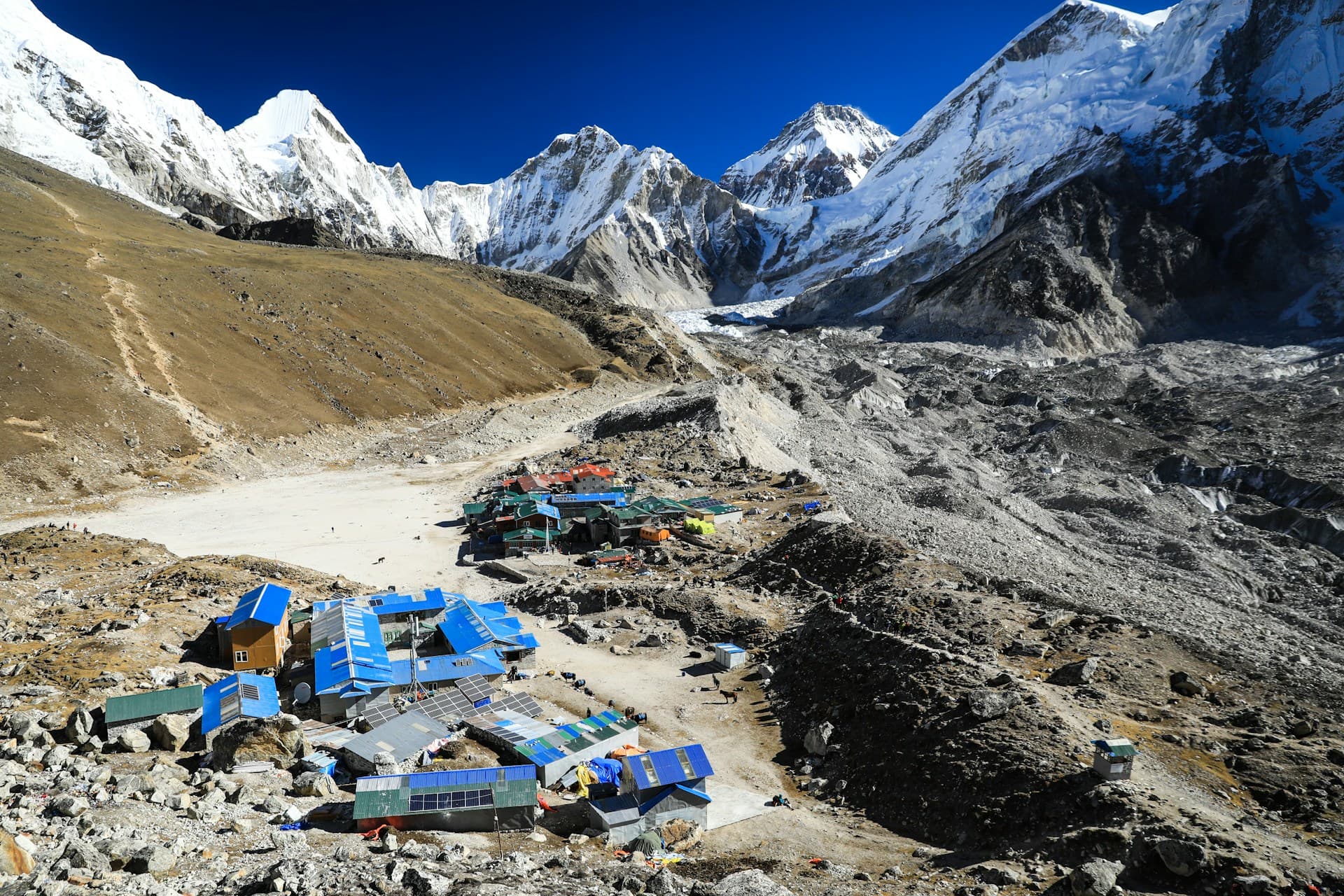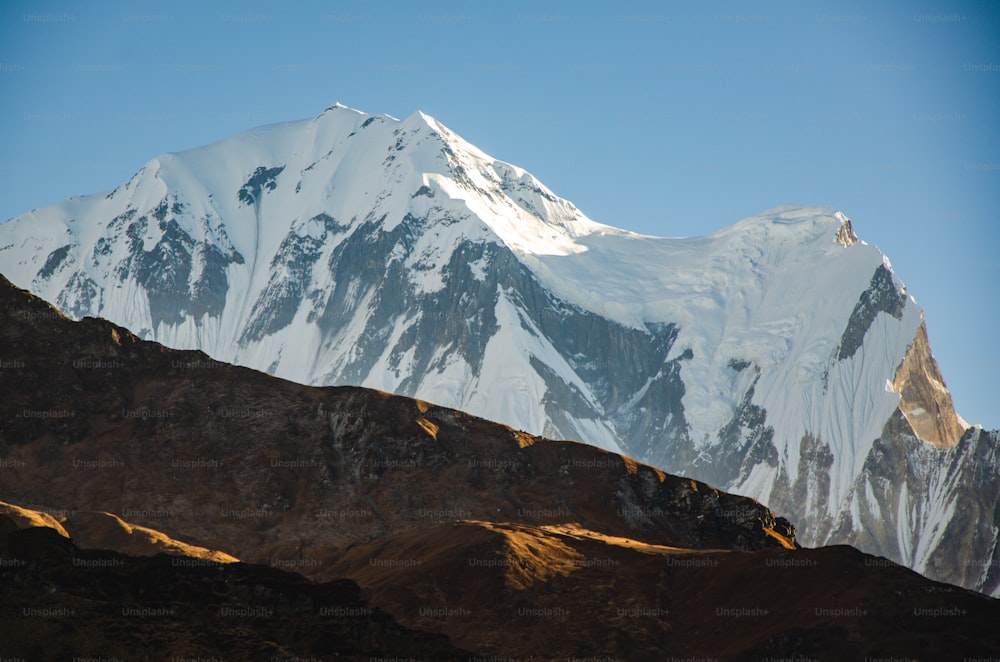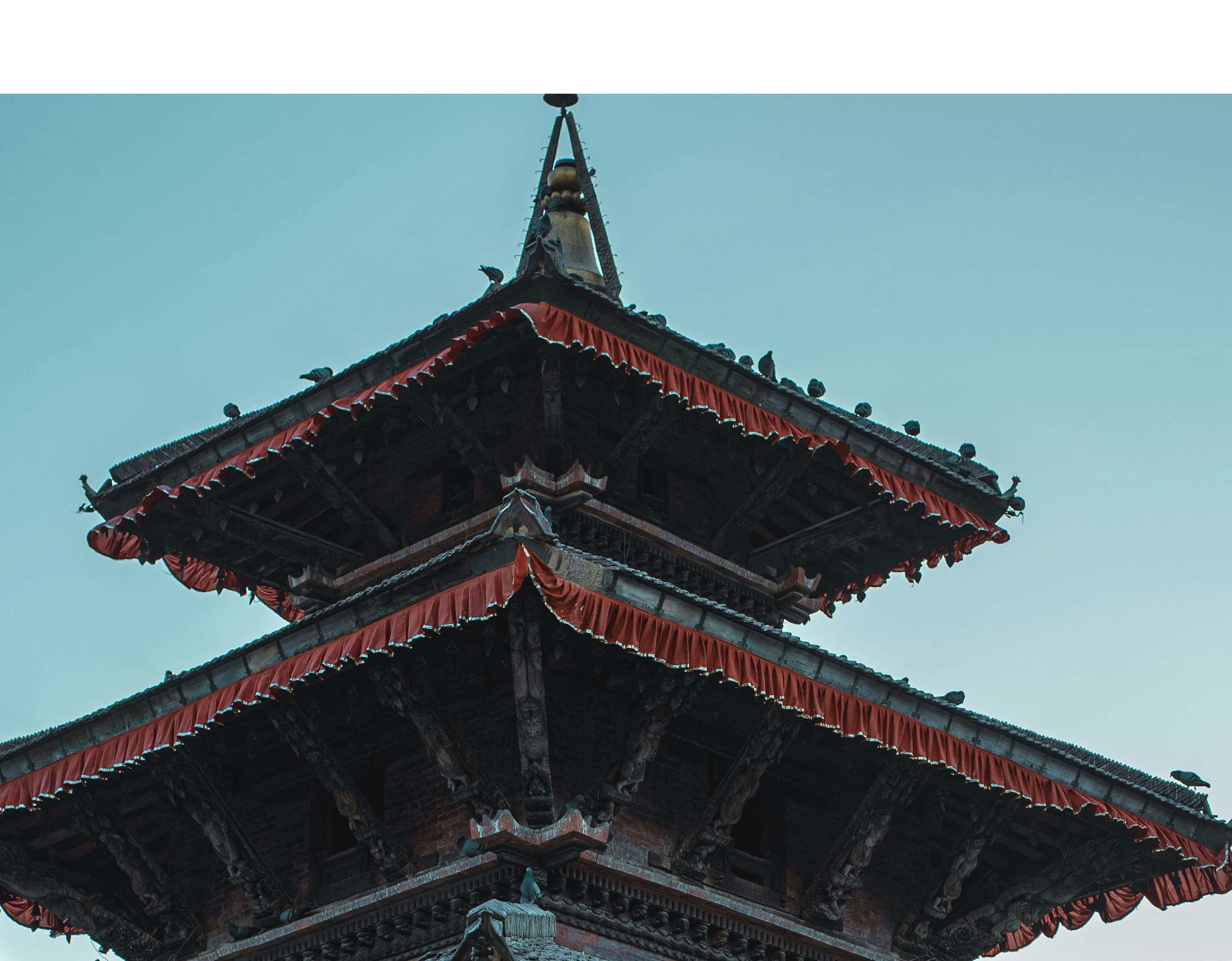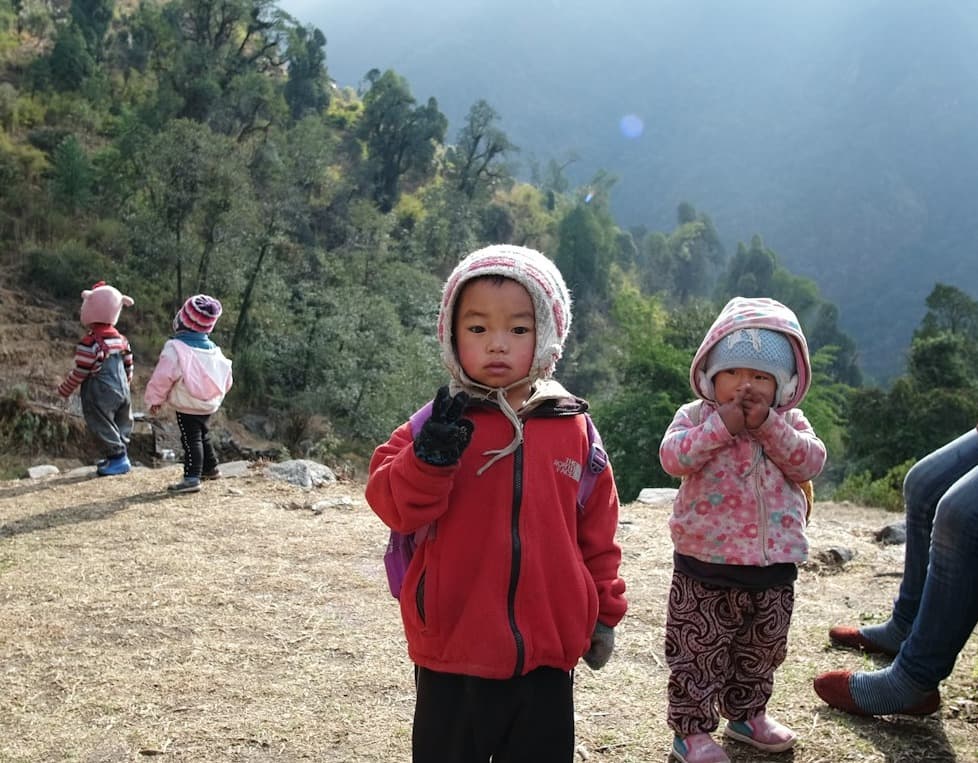Trekking in Nepal is a unique experience that combines adventure, natural beauty, and cultural immersion. Nestled among the peaks of the Himalayas, Nepal offers some of the world's most famous treks, including the Everest Base Camp, Annapurna Circuit, and the secluded trails to Mustang and Dolpo. Each trek brings a distinct flavor of challenges and scenic vistas, ranging from lush rhododendron forests and alpine meadows to rugged mountain passes and icy glaciers.
The allure of trekking in Nepal lies not just in its stunning landscapes but also in its ability to connect trekkers with local cultures. As you walk the ancient paths used by the locals for centuries, you encounter diverse ethnic communities such as the Sherpas, Gurungs, and Thakalis, who offer warm hospitality and a glimpse into a lifestyle that balances tradition with the hardships of mountain living.
Everest Base Camp Trek
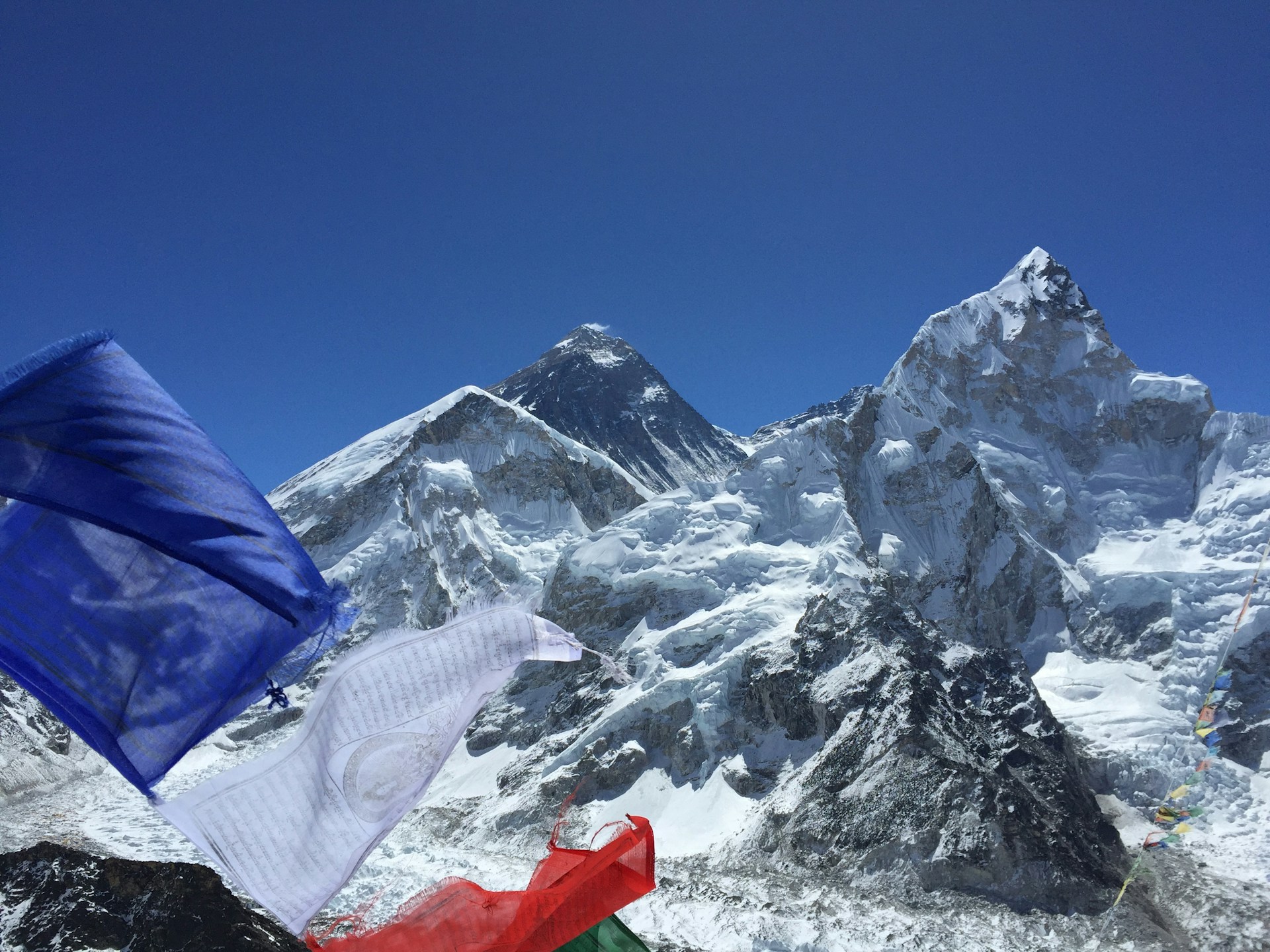
The Everest Base Camp Trek is a magnificent adventure to the base of the highest peak in the world, Mount Everest, standing at 8,848.86 meters. More than just a trek, it is a journey through stunning natural landscapes and a close encounter with the rich culture and warm hospitality of the Sherpa community.
Journey and Experiences
The adventure begins with a scenic flight from Kathmandu to Lukla. From there, the trek takes you through ancient villages, exposing you to the majesty of towering peaks like Lhotse, Amadablam, Nuptse, and others. The route passes through the diverse ecosystems of the Sagarmatha National Park, a UNESCO World Heritage site, offering opportunities to witness a variety of flora and fauna. Highlights include the iconic Tengboche Monastery, a spiritual and cultural hub in the Khumbu region.
Duration and Challenges
The trek typically spans 11 days, including 9 days of trekking alongside days allocated for acclimatization and exploring local villages like Khumjung and Dingboche. The journey is suitable for both beginners and experienced trekkers with reasonable fitness levels. Preparation should begin 2-3 months prior with aerobic exercises to ensure a comfortable experience, especially for those with respiratory or heart conditions.
Alternative Routes for Adventurers
For those seeking more rigorous challenges, options such as the 19-day Everest Three High Passes Trek or the 18-day Everest Base Camp Trek with Gokyo Lakes offer extended routes that explore additional scenic vistas and high-altitude passes.
Trip Highlights
- Kalapatthar (5,550m): Known as 'Black Rock', this viewpoint offers panoramic views of mountains including Pumori, Lingtren, Everest, and Nuptse, along with the Khumbu glacier and Icefall.
- Cultural Immersion: The trek allows for deep engagement with Sherpa culture through visits to local museums, monasteries, and villages, enriching the trekking experience with cultural depth and local lifestyle insights.
This journey to Everest Base Camp is not just about reaching the base of the highest mountain but embracing the journey through the heart of the Himalayas, filled with awe-inspiring landscapes and enriching cultural exchanges.
Annapurna Base Camp Trek

The Annapurna Base Camp Trek is an extraordinary journey to the heart of the Annapurna range, offering a blend of majestic mountain views, vibrant culture, and diverse natural landscapes. This trek navigates through the Annapurna Conservation Area, a hotspot for biodiversity and the cultural heritage of the Gurung and Thakali communities.
Journey and Experiences
Starting from Pokhara, the gateway to the Annapurna region, the trek ascends through lush subtropical forests and traditional farming villages. As you progress higher, the path offers dramatic views of high peaks including Annapurna I, Machapuchare, and Hiunchuli. Key attractions along the route include the Jhinu Danda hot springs and the deep gorges of the Modi Khola river.
Duration and Challenges
Typically a 10 to 14-day trek, the Annapurna Base Camp Trek reaches an altitude of 4,130 meters at Base Camp. The journey requires moderate fitness and is accessible to most trekkers with preparation. Acclimatization days are essential, especially in places like Ghorepani and Poon Hill, which also offers spectacular sunrise views over the Himalayas.
Alternative Routes for Adventurers
Adventurous trekkers might opt for routes that include the challenging Annapurna Circuit, which encircles the entire Annapurna massif, or the shorter Ghorepani Poon Hill trek, known for its accessibility and the panoramic views from Poon Hill.
Trip Highlights
- Machapuchare Base Camp: Often a stop on the way to Annapurna Base Camp, this area provides close-up views of the sacred, fishtail-shaped Machapuchare mountain.
- Cultural Richness: The trek offers a chance to experience the daily lives of the local Gurung and Magar communities, with opportunities to stay in local teahouses and enjoy traditional Nepali hospitality.
Cultural Immersion
Throughout the trek, opportunities abound for immersing in local culture through interactions with the Gurung and Magar communities, participating in local dances, and tasting the regional cuisine. This trek not only introduces trekkers to high mountain environments but also to the rich cultural tapestry of the Annapurna region.
Langtang Valley Trek
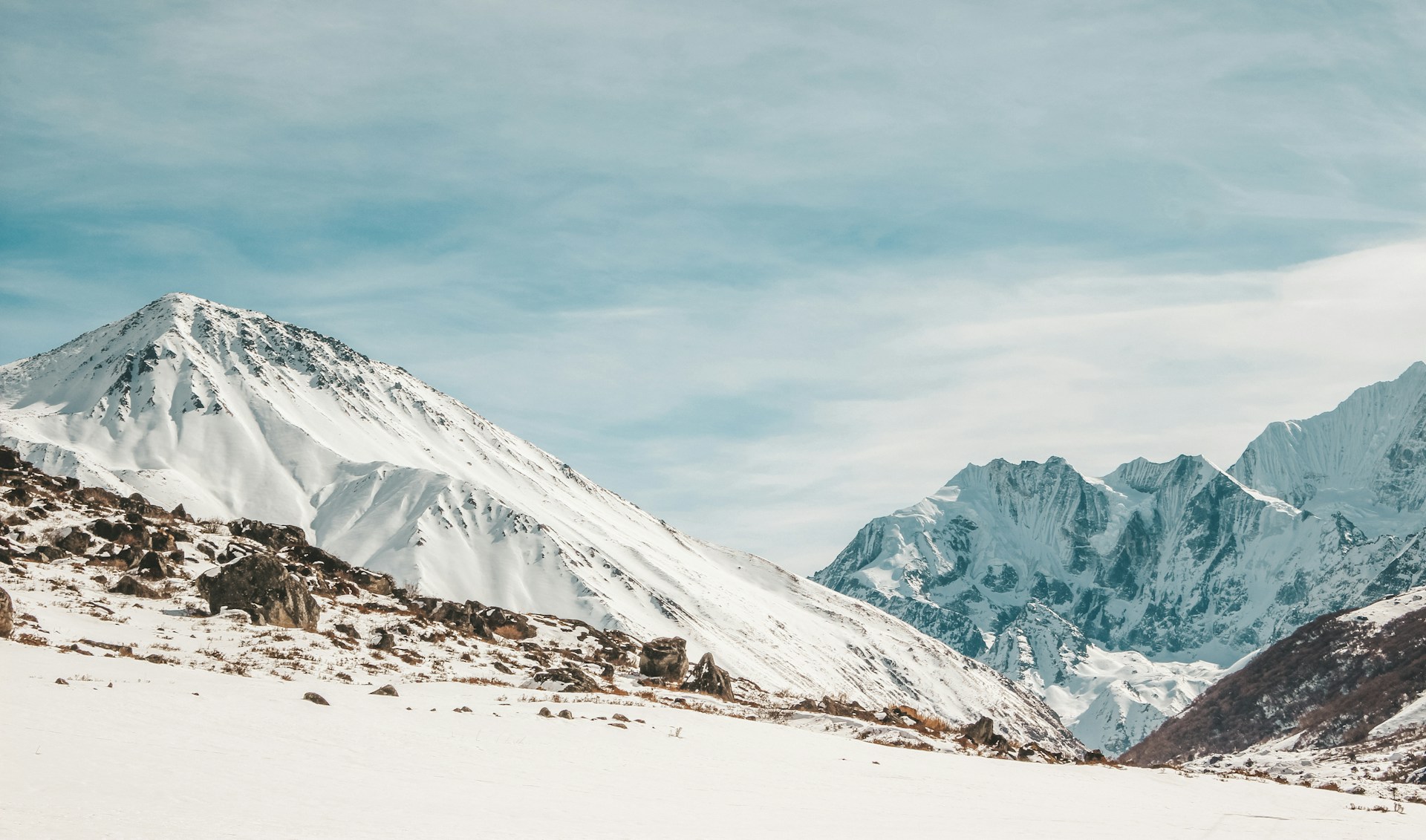
The Langtang Valley Trek is an enchanting journey into a tranquil valley nestled within the majestic Himalayas, close to the Tibetan border. This trek offers a spectacular blend of natural beauty and cultural richness, exploring the Langtang National Park, known for its diverse wildlife and scenic landscapes. The region is home to the ethnic Tamang people, whose culture and traditions closely resemble those of Tibetan Buddhism.
Journey and Experiences
Beginning from the town of Syabrubesi, a drive away from Kathmandu, the trek ascends through dense forests and traditional Tamang villages like Langtang village and Kyanjin Gompa. The trek provides stunning views of Langtang Ri, Langtang Himal, and more. Key experiences include visiting the ancient monasteries and the cheese factory in Kyanjin Gompa, and witnessing the local lifestyle that has remained largely unchanged over centuries.
Duration and Challenges
Typically lasting 7 to 9 days, the Langtang Valley Trek is less strenuous than some of Nepal’s other high-altitude treks and reaches an altitude of about 3,870 meters at Kyanjin Gompa. This makes it accessible to trekkers with a basic level of fitness, though acclimatization days are still recommended to adjust to the high altitude.
Alternative Routes for Adventurers
For those looking for a more challenging experience, the trek can be extended to include the serene Gosaikunda Lakes, revered as holy by both Hindus and Buddhists, or combine it with the Helambu circuit for a longer exploration of the region’s diverse landscapes and cultures.
Trip Highlights
- Kyanjin Gompa: A significant cultural and religious site, offering insights into Buddhist practices and a chance to interact with the local monks.
- Diverse Flora and Fauna: The region boasts a variety of wildlife, including the elusive red panda and numerous bird species, within the subalpine wooded forests.
Cultural Immersion
The trek offers immersive cultural experiences, with visits to local homes and monasteries where travelers can observe and participate in daily rituals and practices. The interaction with the Tamang community provides a deeper understanding of their traditions and lifestyles, greatly enhancing the trekking experience.
This trek to the Langtang Valley is not only a journey through stunning natural landscapes but also a profound cultural encounter, offering a glimpse into the lives of communities residing in the Himalayas.
Manaslu Circuit Trek
.jpg)
The Manaslu Circuit Trek is a breathtaking adventure around the world’s eighth highest mountain, Mount Manaslu, offering a remote and culturally enriching experience. This trek traverses a diverse range of landscapes, from lush subtropical forests to arid Tibetan highlands, providing a less trodden path compared to Nepal's more popular treks.
Journey and Experiences
Starting from the town of Soti Khola, after a scenic drive from Kathmandu, the trek gradually ascends through ancient, culturally rich villages such as Samagaon and Samdo, closely linked to Tibetan culture. The trek circles the majestic Manaslu mountain, with spectacular views of snow-capped peaks over 8,000 meters. The high point of the trek is the crossing of the Larkya La Pass, one of the most dramatic passes crossing the Himalayas.
Duration and Challenges
The trek typically lasts about 14 to 20 days and reaches an altitude of 5,106 meters at Larkya La Pass. It is considered challenging due to its length, altitude, and remote nature. Trekkers need to be in good physical condition and have some trekking experience. Acclimatization days are crucial to adapt to the high altitude, especially before crossing the Larkya La.
Alternative Routes for Adventurers
Trekkers can extend their journey to include the Tsum Valley, a beautiful, sacred valley with strong historical ties to Tibet, offering a glimpse into the untouched culture and scenery.
Trip Highlights
- Larkya La Pass: The highest point of the trek, providing breathtaking views of the Manaslu, Annapurna, and many other Himalayan peaks.
- Rich Cultural Experience: Immersive cultural encounters with the local Nubri and Tsum communities, whose lifestyles and traditions have remained largely unchanged due to their remote location.
Cultural Immersion
The trek is a deep dive into the heritage of the Nubri and Tsum people, enriched by visits to ancient monasteries and interactions with the locals. This experience highlights the unique Buddhist culture, with vibrant prayer flags, mani walls, and monasteries that dot the landscape.
This journey around Manaslu is not only a physical trek but also a passage through living history, offering an intimate experience with the Himalayan landscape and its people.
Upper Mustang Trek
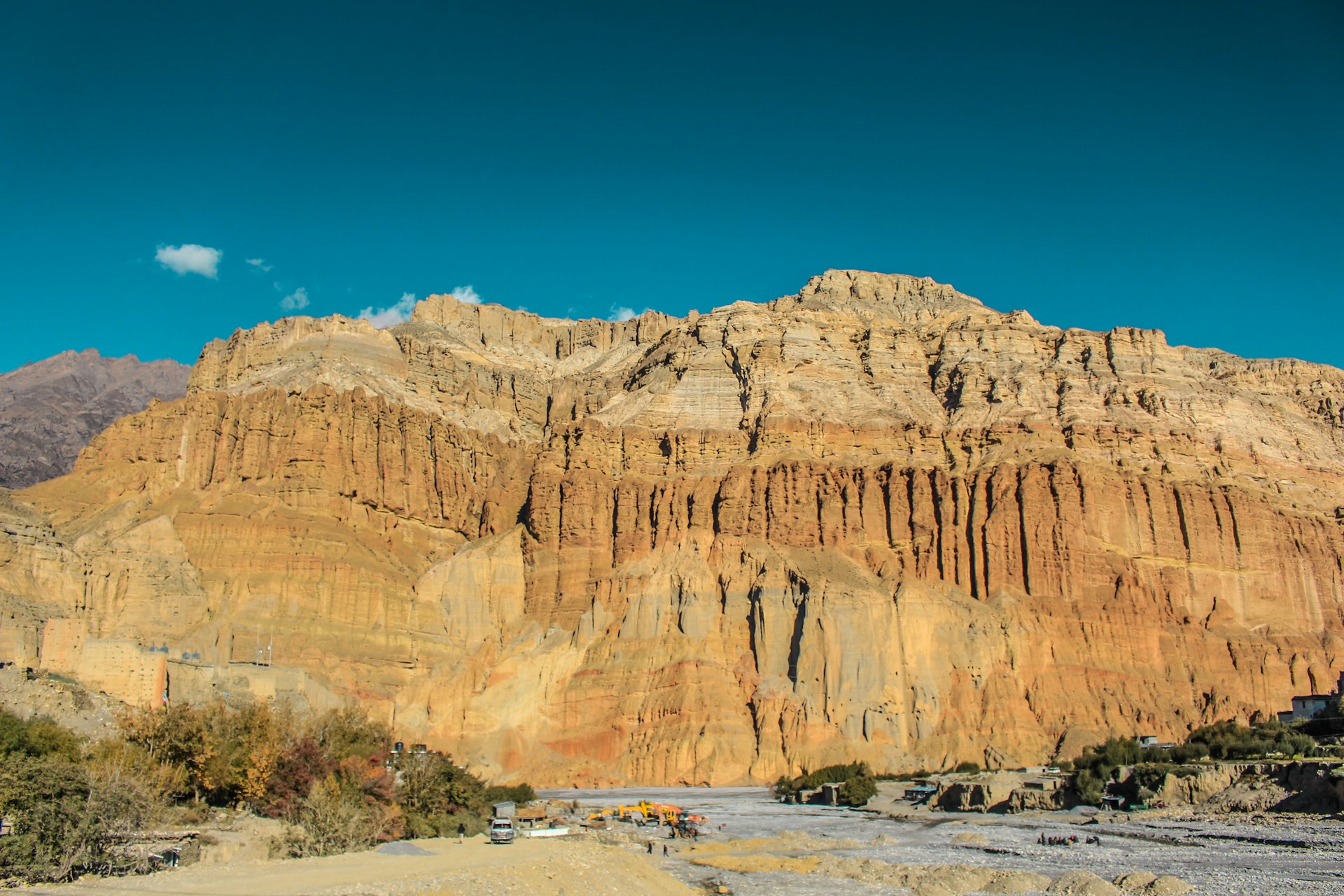
The Upper Mustang Trek offers an extraordinary journey into the remote and ancient kingdom of Mustang, nestled in the rain shadow of the Himalayas, close to the Tibetan border. This trek unveils a starkly beautiful landscape dotted with Tibetan Buddhist cultural symbols, medieval villages, and rare geological formations.
Journey and Experiences
Starting from Jomsom, accessible by a flight or a long drive from Pokhara, the trek progresses through arid, desert-like terrain, contrasting sharply with the lush greenery typically associated with Nepal. The route leads through iconic towns like Kagbeni and Lo Manthang, the walled capital of the ancient Kingdom of Mustang. The trek features stunning vistas of dramatic cliffs, deep canyons, and distinctive rock formations. Explorers witness centuries-old monasteries like Ghar Gompa and encounter art and architecture that have been preserved for centuries due to the region's isolation.
Duration and Challenges
This trek typically spans 10 to 14 days and reaches an altitude of 3,800 meters at Lo Manthang. The trail is less physically demanding than other high-altitude treks in Nepal but still requires a good level of fitness due to its duration and the arid climate. Permits are also necessary as Upper Mustang is a restricted area to help preserve its unique culture.
Alternative Routes for Adventurers
Adventurous trekkers can extend their journey to include challenging side trips to areas like Yara and Tangge, known for their striking landscapes and ancient cave systems. These additions introduce more demanding hikes but reward trekkers with less frequented sites and immersive cultural interactions.
Trip Highlights
- Lo Manthang: A historical fortified city that offers a glimpse into the life of the Mustangi royalty and showcases richly decorated monasteries and palaces.
- Ancient Art and Culture: The region is rich in Tibetan Buddhist art, visible in elaborate frescoes and ancient scriptures stored in the monasteries.
Cultural Immersion
The trek into Upper Mustang is as much a cultural immersion as it is a trekking adventure. The interaction with the local Loba community provides insights into a way of life that has remained unchanged for centuries. The region's cultural festivals, such as the Tiji festival in Lo Manthang, offer trekkers a vibrant showcase of local traditions and religious practices.
This trek to Upper Mustang isn’t just a physical journey but a passage back in time, offering a profound cultural experience in one of the most preserved regions of the Himalayas.
Ghorepani Poon Hill Trek

The Ghorepani Poon Hill Trek is a popular and relatively easy journey into the Annapurna region of Nepal, known for its stunning vistas and accessible trekking routes. This trek is especially famous for the panoramic sunrise views from Poon Hill, which offer a breathtaking perspective of the Annapurna and Dhaulagiri mountain ranges.
Journey and Experiences
Starting from Nayapul, a short drive from Pokhara, the trek meanders through lush rhododendron forests and charming Gurung and Magar villages. The ascent to Poon Hill is a highlight, providing trekkers with an unforgettable sunrise and the Himalayan panorama. The path also leads through Tikhedhunga and Ghorepani, showcasing the rich biodiversity of the area.
Duration and Challenges
The trek typically lasts 4 to 5 days, making it an excellent choice for beginners or those with limited time. Reaching a maximum altitude of 3,210 meters at Poon Hill, it offers a gentle route suitable for families and less experienced trekkers. The steps leading up to Ghorepani pose the primary physical challenge, but the gradual ascent makes acclimatization manageable.
Alternative Routes for Adventurers
For those seeking a longer trek, the Ghorepani Poon Hill route can be extended to include the Annapurna Base Camp, adding several days to the itinerary and introducing more rugged terrain and higher altitudes.
Trip Highlights
- Poon Hill: Known for its spectacular sunrise views over the Annapurna and Dhaulagiri ranges, Poon Hill is a focal point of the trek.
- Cultural Richness: The trek passes through several Gurung and Magar villages, where trekkers can immerse themselves in the local culture and lifestyle.
Cultural Immersion
Visitors on the Ghorepani Poon Hill Trek often engage with the local community, experiencing the hospitality and cultural practices of the Gurung and Magar peoples. This cultural exchange is enhanced by the welcoming nature of the teahouses and the opportunity to participate in local traditions.
This trek not only offers a journey through some of the most picturesque landscapes in Nepal but also provides a window into the vibrant culture of the Annapurna region.
Gokyo Lakes Trek
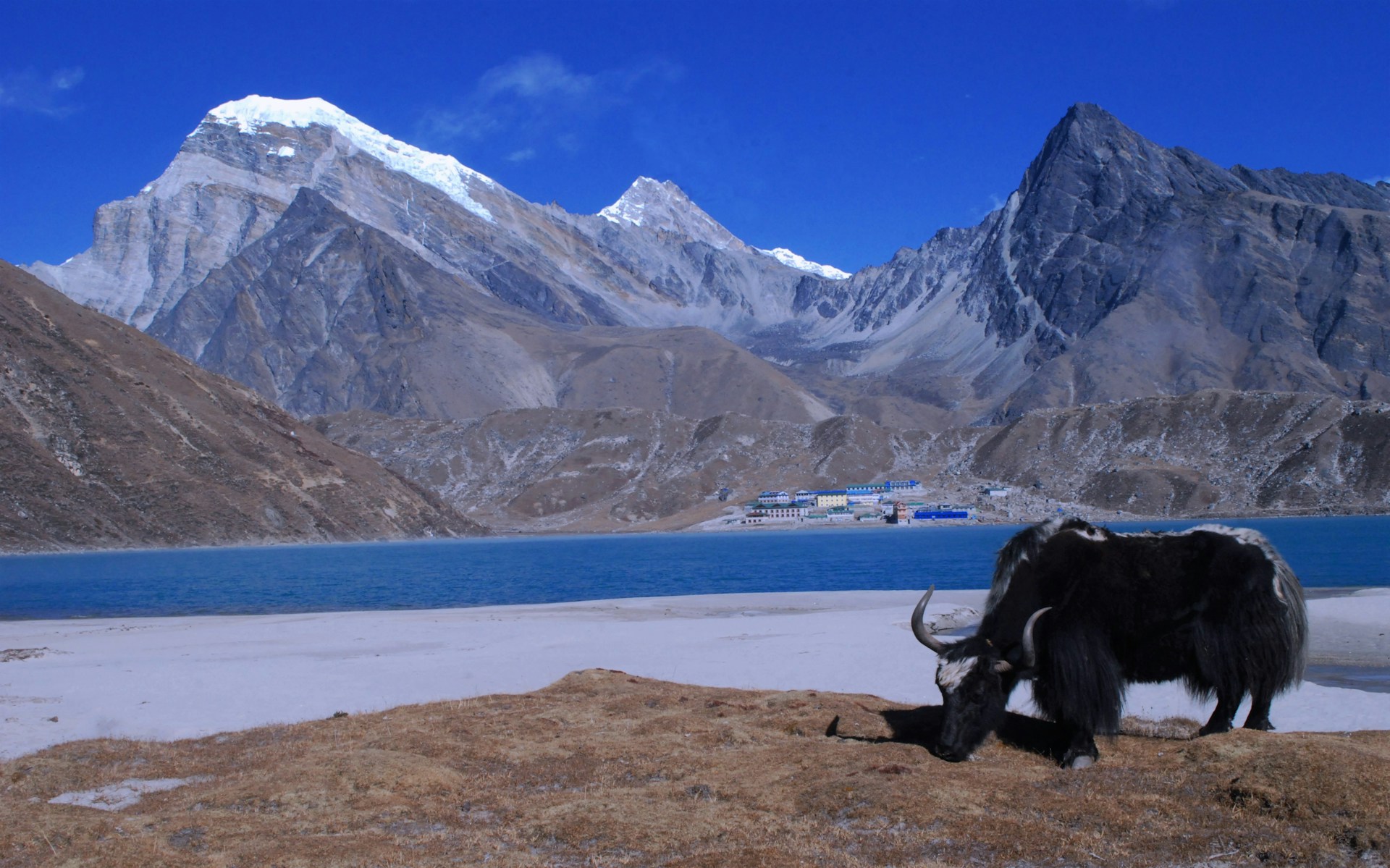
The Gokyo Lakes Trek is an exceptional journey into the Everest region of Nepal, offering an alternative to the traditional Everest Base Camp route. This trek is renowned for its stunning series of turquoise high-altitude lakes, and the panoramic views from Gokyo Ri, one of the best vantage points for viewing Everest and the surrounding Himalayas.
Journey and Experiences
Starting from Lukla, after a short flight from Kathmandu, the trek diverges from the classic Everest trail at Namche Bazaar, leading trekkers through the serene landscapes of the Gokyo Valley. The trek passes through smaller, less crowded villages and the sacred Gokyo Lakes, culminating in a climb up Gokyo Ri, which offers expansive views of Everest, Lhotse, Makalu, and Cho Oyu.
Duration and Challenges
Typically lasting about 12 to 15 days, the Gokyo Lakes Trek reaches an altitude of 5,357 meters at Gokyo Ri, making it a challenging yet rewarding experience. This trek requires good physical fitness and acclimatization to high altitudes, with rest days recommended in villages like Machhermo to adapt to the thinning air.
Alternative Routes for Adventurers
Trekkers looking to extend their adventure can combine the Gokyo Lakes Trek with a crossing of the Cho La Pass, linking up with the Everest Base Camp and Kala Patthar route for a comprehensive exploration of the Everest region.
Trip Highlights
- Gokyo Ri: Offers one of the most spectacular Himalayan panoramas in Nepal, especially at sunrise.
- Gokyo Lakes: A system of six emerald lakes that are among the highest freshwater lakes in the world, revered as sacred by both Hindus and Buddhists.
Cultural Immersion
The trek offers a glimpse into the lifestyle and traditions of the high-altitude Sherpa communities. The less traveled path to Gokyo provides a more intimate experience of the local culture, with opportunities to visit monasteries and interact with the Sherpa people in a setting that is quieter and more secluded than the bustling trails to Everest Base Camp.
This trek not only challenges trekkers physically but also rewards them with some of the most splendid views and cultural insights into the Everest region.
Kanchenjunga Base Camp Trek
The Kanchenjunga Base Camp Trek is a challenging and remote expedition in the eastern part of Nepal. This trek offers adventurers a chance to explore the areas around the world’s third highest peak, Mount Kanchenjunga. It is known for its pristine wilderness, dramatic landscapes, and the unique cultural experiences it offers through its proximity to both the Indian and Tibetan borders.
Journey and Experiences
The trek starts with a flight or drive to Taplejung or Bhadrapur, followed by a drive to the trek's starting point. The route progresses through lush rhododendron forests, alpine meadows, and high-altitude landscapes. Trekkers pass through traditional Rai and Limbu villages, gaining insight into the local lifestyle and culture. The path includes challenging passes, glacier walks, and the panoramic views from the base camps of Kanchenjunga’s North and South Faces.
Duration and Challenges
Spanning around 14 to 20 days, the trek is strenuous and takes trekkers to high altitudes, reaching up to 5,143 meters at Pang Pema, the northern base camp of Kanchenjunga. The remote nature of this trek, combined with its length and the need for proper acclimatization, makes it suitable for more experienced trekkers.
Alternative Routes for Adventurers
For those looking for even more adventure, the Kanchenjunga Circuit combines the North and South Base Camp treks, offering a complete experience of the region’s varied landscapes and cultural heritage.
Trip Highlights
- Pang Pema (North Base Camp): Provides spectacular views of Kanchenjunga’s towering peaks and massive glaciers.
- Cultural Diversity: The trek offers a deep dive into the ethnic cultures of eastern Nepal, with significant influences from neighboring Sikkim and Tibet.
Cultural Immersion
The Kanchenjunga Base Camp Trek not only challenges trekkers physically but also offers rich cultural engagement. Visiting remote villages and interacting with locals from diverse ethnic backgrounds such as the Rai and Limbu people enhances trekkers' understanding of the region's cultural tapestry.
This trek is a journey through some of the most untouched and rugged terrains in the Himalayas, providing an unparalleled experience of solitude, wilderness, and cultural richness.
Makalu Base Camp Trek
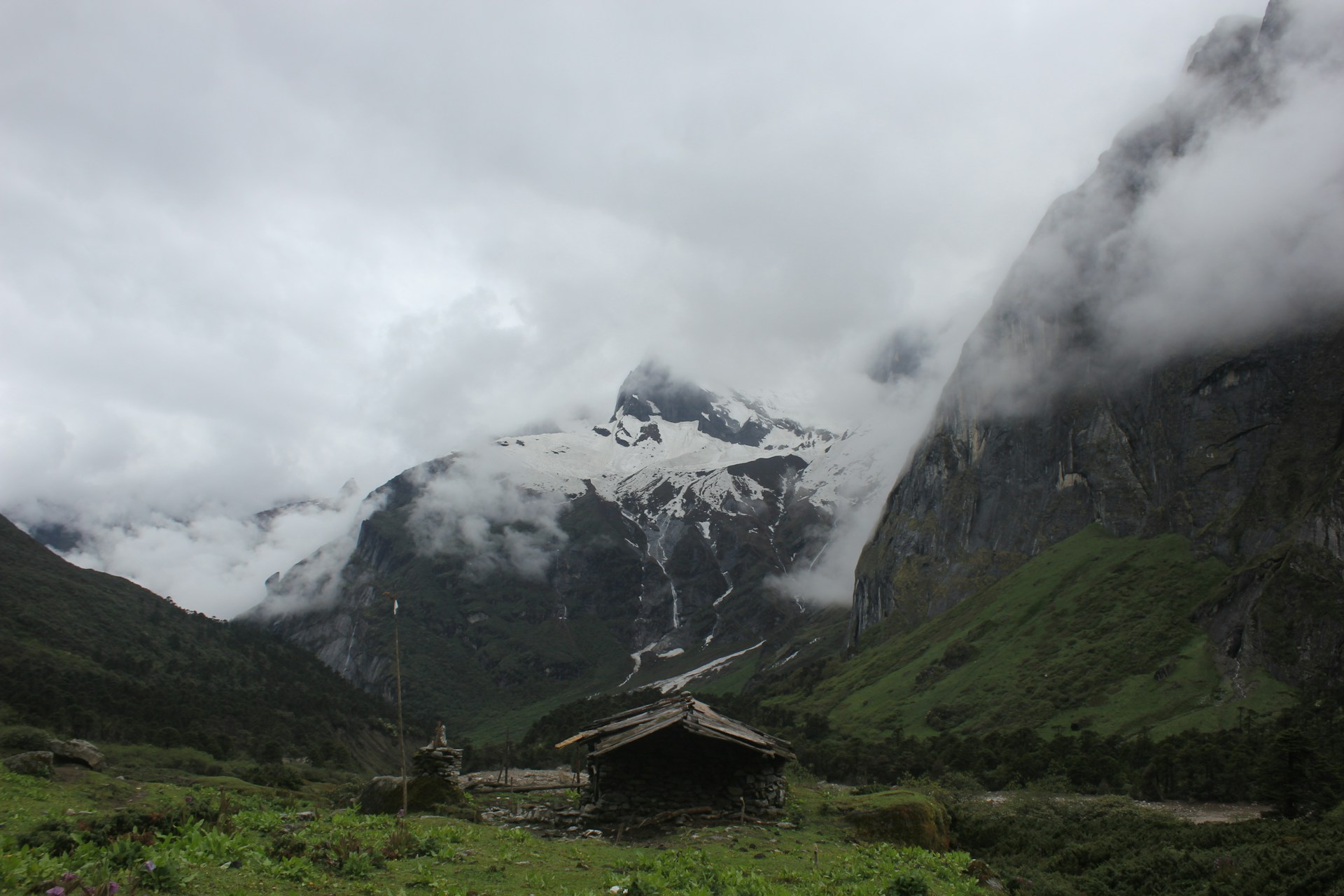
The Makalu Base Camp Trek is a remarkable journey into one of the more remote and less trodden areas of the Himalayas, centered around Mount Makalu, the fifth highest mountain in the world. This trek is known for its rugged terrain, rich biodiversity, and stunning high-altitude landscapes, offering a more isolated experience compared to the popular Everest and Annapurna treks.
Journey and Experiences
Starting with a flight from Kathmandu to Tumlingtar and a drive to the trek's starting point, the route ascends through the lush Arun Valley before entering the Makalu Barun National Park. Trekkers pass through a variety of landscapes, from tropical rainforests to rocky, snow-capped peaks. The trek includes a visit to Makalu Base Camp, situated at an elevation of 4,870 meters, offering up-close views of the south face of Makalu, as well as Everest and Lhotse on clear days.
Duration and Challenges
Typically lasting about 14 to 20 days, the Makalu Base Camp Trek is considered challenging due to its remote nature and high altitudes. This trek demands excellent physical fitness and acclimatization to deal with the thin air, especially at higher altitudes near the base camp.
Alternative Routes for Adventurers
For those looking for an extended trekking experience, options include exploring the beautiful Barun Valley, known for its stunning glaciers and waterfalls, or attempting the more demanding Three Passes Trek, which covers high-altitude passes for experienced trekkers.
Trip Highlights
- Makalu Base Camp: Provides breathtaking views of the mighty Makalu.
- Rich Biodiversity: The route through Makalu Barun National Park is home to a diverse array of flora and fauna, including rare species like the red panda and snow leopard.
Cultural Immersion
The trek provides opportunities to experience the lifestyles of ethnic groups such as the Rai and Sherpa communities in the lower sections of the trek. Their unique cultural practices and warm hospitality add depth to the trekking experience.
This trek is not just a physical challenge but also an exploration into one of the most pristine environments in the Himalayas, offering both solitude and breathtaking natural beauty.
Rara Lake Trek
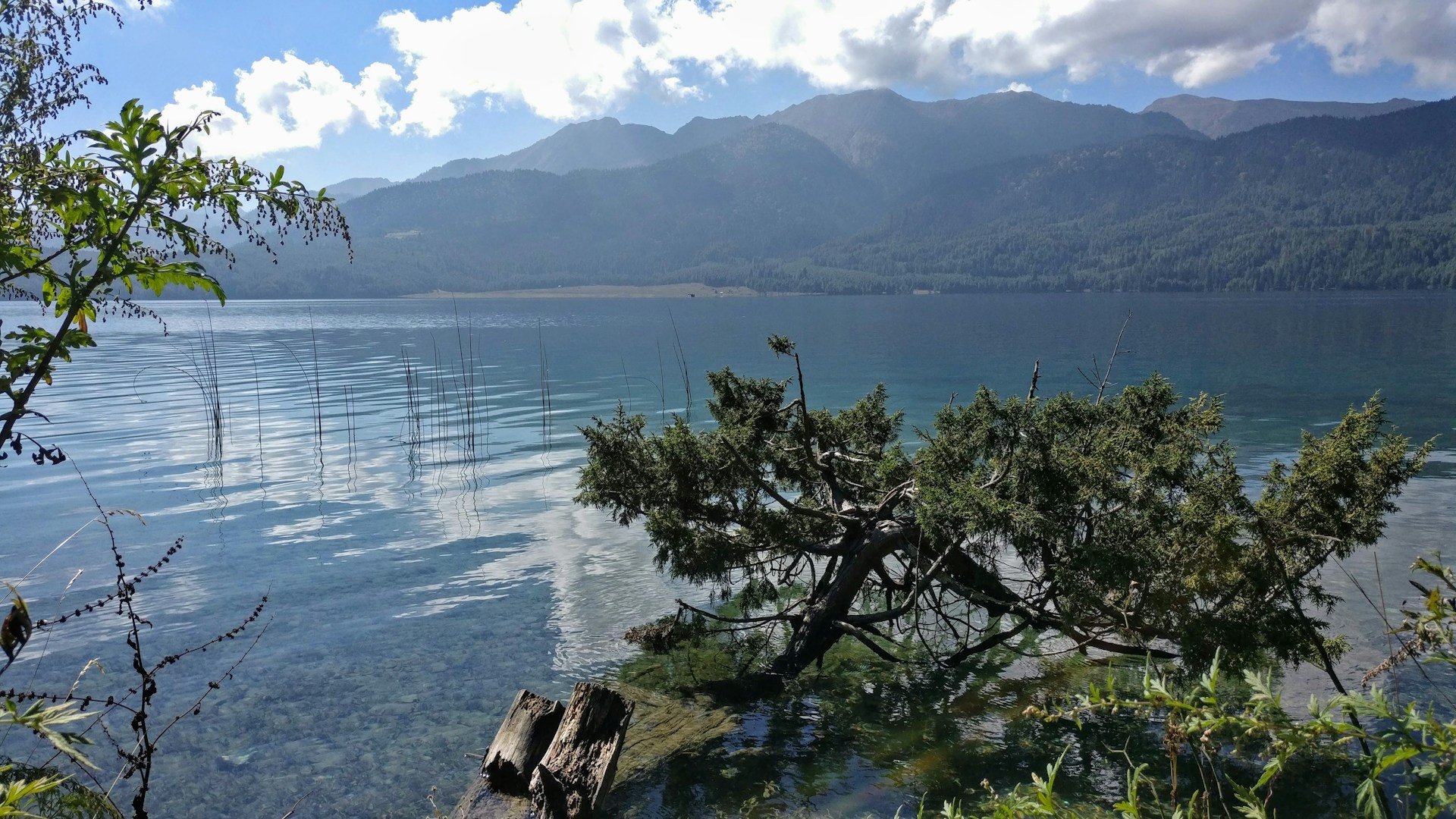
The Rara Lake Trek is a unique journey to the remote and pristine Rara Lake, the largest lake in Nepal, nestled within the serene Rara National Park in the northwest of Nepal. This trek is less frequented and offers a tranquil experience amidst one of the most picturesque settings in the Himalayas.
Journey and Experiences
The adventure begins with a flight from Kathmandu to Nepalgunj followed by another flight to Jumla from where the actual trekking starts. The trek takes you through remote mountain paths, offering views of forests and alpine pastures leading up to the stunning Rara Lake. The area around Rara Lake is known for its incredible natural beauty and tranquility, providing a perfect backdrop for both relaxation and exploration.
Duration and Challenges
This trek generally lasts about 9 to 12 days and, while not as high-altitude as some other Himalayan treks, still presents challenges due to its remote location and the basic nature of the facilities along the way. It reaches an altitude of around 3,060 meters at Rara Lake, making it suitable for those who are looking for a less strenuous journey in the mountains.
Alternative Routes for Adventurers
Trekkers can extend their journey by exploring more of the Rara National Park or integrating cultural visits to nearby villages to deepen their understanding of the local lifestyles and traditions.
Trip Highlights
- Rara Lake: Known as the 'Queen of Lakes', Rara is renowned for its clear blue waters and scenic surroundings, which change colors with the seasons.
- Biodiversity: Rara National Park is a haven for wildlife enthusiasts, home to species such as the Himalayan black bear, musk deer, and a variety of birds, including the endangered cheer pheasant.
Cultural Immersion
The trek provides a rare glimpse into the life of the communities living in Nepal's remote Mugu and Jumla districts. The cultural experiences include interaction with the local people and the chance to observe their unique traditions and customs.
This trek to Rara Lake is not only an exploration of one of the most secluded natural beauties of Nepal but also an opportunity to witness the undisturbed cultural heritage of the region's indigenous communities.

